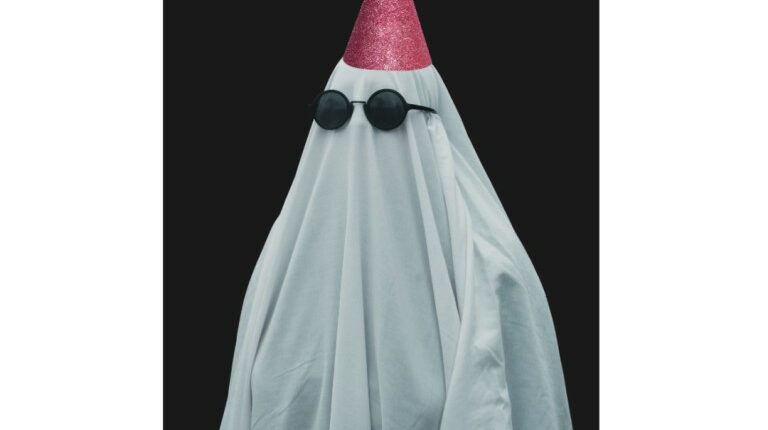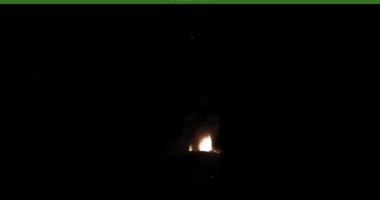Share this @internewscast.com
A BREWERY is fighting for your right to party by paying for customers’ outlandish party ideas.
As Gen Z parties less and stays in more, one brewery is trying to help guide the newest party generation into a more social direction.
“After the pandemic, there’s been a noticeable decline in social gatherings,” explained Nikki Blank, the marketing lead at Torch and Crown brewery located in New York City, in a conversation with The U.S. Sun. “We used to live in close-knit communities, but now it feels like everyone is on their own.”
“This change is reflected in our financial results,” she noted. “Fewer people are going out and spending money, and you can visibly see this change in the brewery itself.”
It’s well-known that the combination of rising entertainment costs and the growing emphasis on wellness among Gen Z, those born from 1997 to 2012, has altered their partying habits.
“A night at the club is like a $150+ event,” Tiktoker Demetrius Fields previously told Newsweek.
“Cover charges can be $30, and good DJs can make it $50 or more. Drinks can cost $15 each and double if you’re with a date. Plus, an Uber ride might be $70 if you choose not to drive.”
To alleviate these financial pressures, Blank proposed the Torch and Crown Slush Fund, aiming to support individuals who wish to host parties but lack sufficient resources.
“We just want people to be gathering,” Blank said.
“There’s a scarcity of venues where young people can gather,” she said. “We want to recreate such spaces where they can learn the art of conversation and hanging out, as it seems a part of that has been lost.”
To Blank, the solution to the lack of partying “felt like…it needed to be outrageous.”
The fund will provide select parties with around $5,000 to host an extravagant party at either the Torch and Crown SoHo or Union Square locations.
Blank said the bar is still in the process of figuring out precisely what a slush fund party would look like, but as of now, it includes the brewery providing the partiers with an event space, food, beer, and decor.
For a person to win the fund, they need to pitch their party ideas to Blank, and she’ll be the one to help decide if it’s something they can host.
“We’re almost at 400 applications right now,” Blank said.
“And some incredible ideas from people, and it feels like the need is so there. It was very validating, and that this is something that people need and want and are looking for.”
Slush Fund parties
Slush fund parties are already beginning to be booked, here are the ones planned for this fall:
JimmyFest: Ridiculous Fest
- A birthday blowout for Jimmy turned full-on “Ridiculous Fest,” complete with costumes, chaos, and maximalist energy — a party designed to be as over-the-top as possible
Performative Male Pop-Up
- A one-day pop-up market exploring the absurdity of “performative maleness,” featuring labubu tattoos, a live DJ, matcha popup, aura readings, vendors, and more
Rytoberfest
- An Oktoberfest hosted by 300+ New Yorkers named Ryan, complete with steins, sausages, and tongue-in-cheek Ryan-only festivities
Let’s Get Corny
- A whimsical, corn-themed festival featuring husking competitions, cornhole, trivia, and viral corn memes — plus potential tie-ins with local corn vendors
Spelling Bee
- A raucous adult spelling bee with comedic hosts, audience participation, and plenty of wordplay
Sharktoberfest
- A shark-themed underground bash in the Brewer’s Cellar, blending “under the sea” décor, costumes, and dance-party energy for peak October silliness
Talent Show
- An open-mic style “American Idol” night where guests perform music, stand-up, and other acts, with the audience voting for the winner via QR codes
Murder Mystery
- A full-scale interactive murder mystery with costumes, actors, detectives, and side quests — blending gameplay, theatrics, and a late-night dance floor
Date Party
- A throwback to college-style “date parties” — every guest brings a dating app date
Funeral for an NDA
- A dramatic reading and campy funeral for the expiration date of an NDA
Pickle Ball
- A goofy, pickle-themed ball with ribbons, maximalist décor, pickleback shots, and a DIY “pickle bar” — a slightly formal, very silly night out
Beer Pong Speed Dating
- Part game, part matchmaking experiment: singles rotate partners through rounds of beer pong, turning the classic college drinking game into a fast-paced dating format
Space Race
- A Cold War–themed party riffing on the U.S. vs. USSR “space race,” featuring vodka, American beers, and out-of-this-world décor
Torch and Crown already has 14 slush fund parties booked, almost ten more than Blank initially planned for.
The parties range from beer pong speed dating to a “Funeral for an NDA” celebration.
The NDA funeral will include a “dramatic reading and campy funeral for the expiration date of an NDA.”
Torch and Crown’s first Slush Fund party will take place on September 6, and is titled “JimmyFest: Ridiculous Fest.”
The JimmyFest will be a big birthday blowout for a man named Jimmy and will be “complete with costumes, chaos, and maximalist energy.”
“I’m having a blast just reading through the submissions and hoping to try and figure out how we can maximize all these ideas and get as many people as possible to the parties that they want to go to,” Blank said.
While the fund will be an excellent promotion for the brewery, Blank hopes that it will lead to something larger.
She hopes that it will help Gen Z disconnect from their phones and celebrate the mundane things in life.
“Bring back just celebrating for no reason. Bring back celebrating the little things,” she said.
“There’s a lot of scary stuff. Let’s just celebrate the things that feel good.”
Anyone who wants to pitch a party to the slush fund still has an opportunity to do so via the Google form in the Torch and Crown’s Instagram bio.
Gen-Z and millennials on the state of their homes
Forty-five percent of Gen Z and millennial Americans would feel embarrassed if someone saw the current state of their home.
A new survey of 2,000 Gen Z and millennials showed that 31% of respondents admitted to having a room in their home that hasn’t been cleaned in at least six months.
Alarmingly, many participants spend more time procrastinating cleaning — nearly three hours — than actually cleaning their homes, which averages just under two hours.
Conducted by Talker Research for Swiffer, the survey found that respondents expressed a strong dislike for cleaning certain surfaces. Floors were one of top three least favorite surfaces to clean for a quarter of Americans, with 37% of these respondents putting it in the No. 1 spot.
Similarly, other dusty surfaces like ceiling fans (31%) and baseboards (28%) were also popular picks within the top three areas respondents dislike cleaning.
The survey also found that 36% of participants only clean their homes when expecting visitors, with Gen Z respondents more likely to share this sentiment (39% compared to 33% of millennials).
Notably, one in nine admitted that their home is not up to their usual standards.
Finding the time to clean poses a significant challenge, as the average respondent estimates that cleaning takes about two hours, with 24% claiming it takes even longer.
Over 70% would rather endure undesirable experiences — such as making small talk (19%), sitting in traffic (17%), or running into an ex-partner (9%) — than tackle cleaning their floors.
The survey also revealed that some have procrastinated so long that the longest time without cleaning is estimated at 23 days, with 25 days going by without sweeping or mopping.
“You might be surprised — some of the dirtiest spots in your home are hiding in plain sight, just waiting to be cleaned. These overlooked areas can harbor more dirt and grime than you think.” said Arianna Castro, Swiffer Scientist. “According to the results, 52% of Americans surveyed shared that they only clean their floors when dirt is visible, however, many are unaware that floors can still harbor dust, grime, and other debris even when they appear clean. In fact, microscopic particles like allergens and fine dust can settle deep into floor surfaces and crevices, escaping the naked eye. Daily cleaning helps remove these hidden contaminants, creating a healthier environment for everyone in the home.”
Despite the challenges, 45% of respondents reported that they clean their home daily, with 74% indicating that floor cleaning is a daily or weekly priority.
The kitchen (88%) and living area (85%) are the most frequently cleaned spaces, while closets often take a back seat at just 48% getting cleaned daily or weekly.
The survey also examined cleaning habits based on residential areas. Urban dwellers were found to clean most frequently (50% daily) and were more likely to consider their homes “very clean” (44%) compared to rural residents (27%).
However, those in rural areas spent the longest time cleaning, averaging two hours and 12 minutes, while suburban respondents procrastinated the longest (189 minutes).
For many Americans, a clean home brings more satisfaction than working out or enjoying a hot cup of coffee (20% for each activity).
Others find the satisfaction of a clean home surpasses checking off to-do lists (18%), finishing a book (17%) or taking a hot shower (15%).
Notably, seven in 10 respondents (69%) expressed a desire to clean more frequently if they had access to versatile cleaning products that cleaned in multiple ways.
“Daily cleaning can feel overwhelming, but using the right products makes the job easier by tackling dirt and grime that often go unnoticed,” said Castro. “This helps provide peace of mind, giving people time back in their daily lives to enjoy doing things they love.”




















